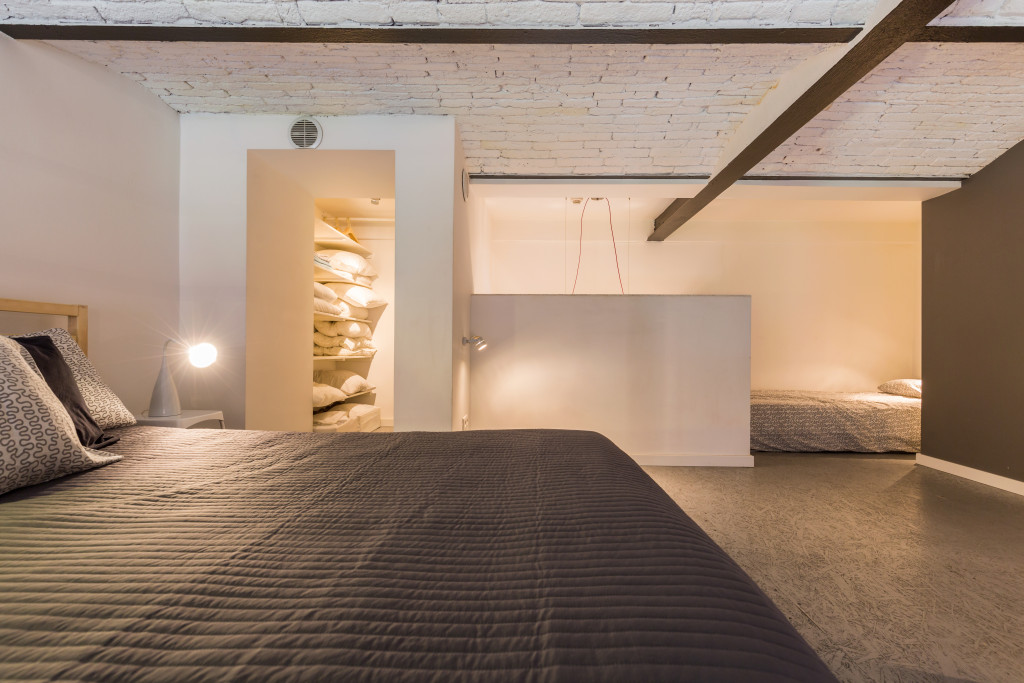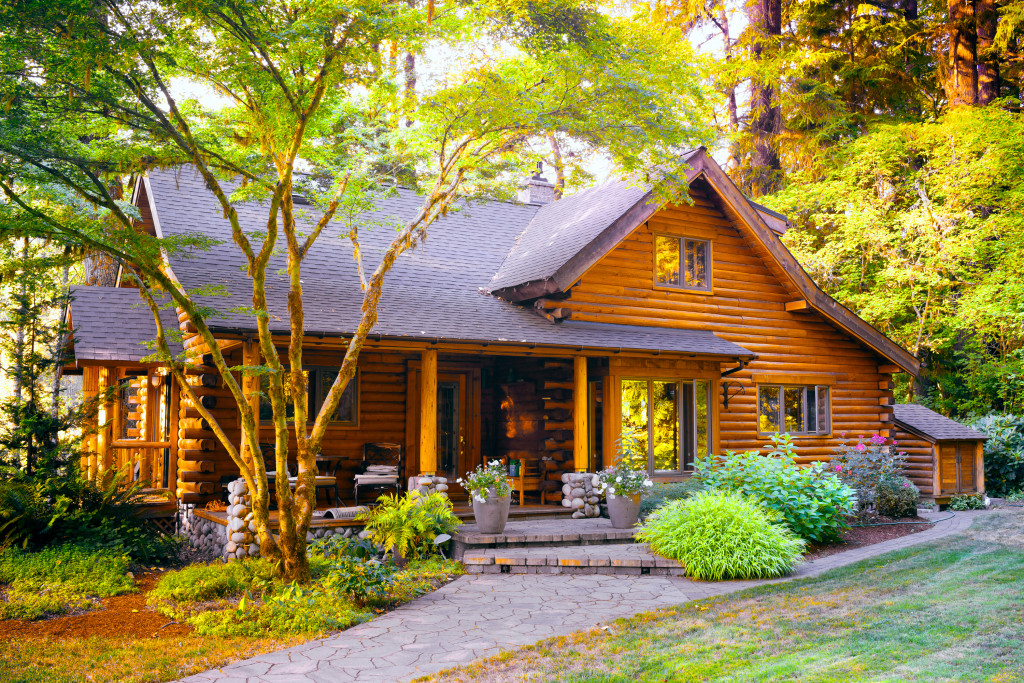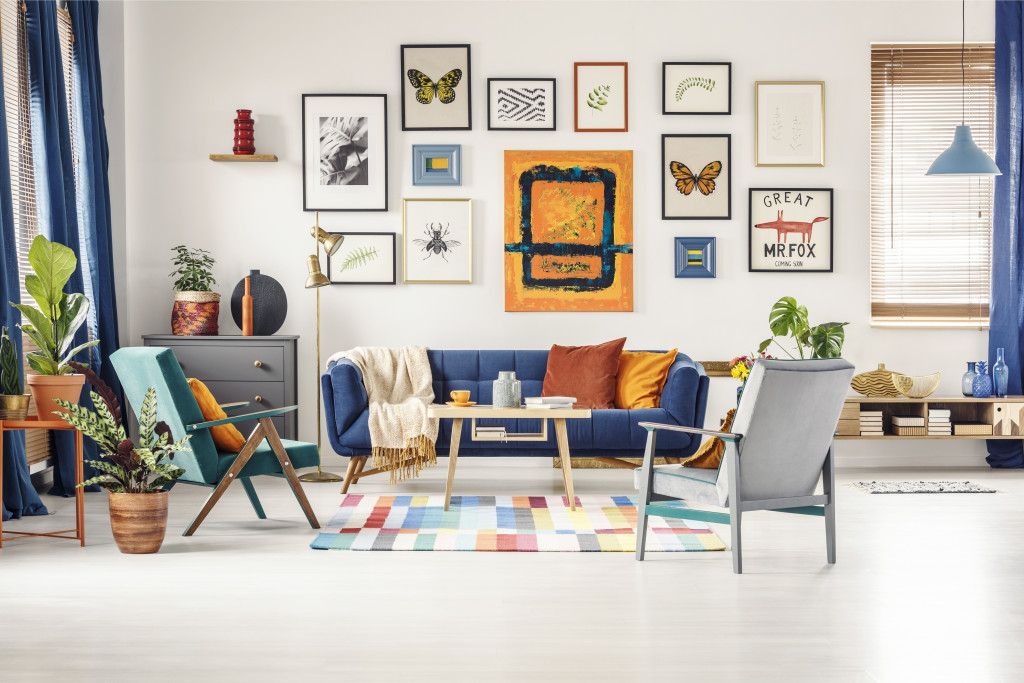- Consider interior design, color scheme, lighting, furniture, and accessories to improve home aesthetics.
- Bring life into a room with natural pieces and use artwork/decorations that reflect personal style.
- Improve curb appeal by regularly cleaning, painting, and repairing the home’s exterior.
- Upgrade the roof with textured shingles or metal panels to increase durability and visual appeal.
The home reflects one’s lifestyle and personal expression, so ensuring it is aesthetically pleasing is essential. An aesthetically pleasing home can promote relaxation, comfort, and a sense of pride and accomplishment.
Studies have shown that the home’s appearance can significantly impact one’s mental health and well-being. According to research by the American Psychological Association, people who live in a beautiful environment with plenty of natural light are more likely to be happier and healthier than those who live in cluttered or dark spaces. Furthermore, people living in an aesthetically pleasing environment can experience improved self-esteem, increased productivity, and better sleep quality.
However, you might not know what to pursue when attempting to improve the aesthetics of your home. When considering ways to make your home more aesthetically pleasing, consider the following:
Interior Design
Improving the interior design elements of a home can have a significant impact on its overall aesthetics. Interior design is often the foundation for creating a truly stunning space, as it can help create an atmosphere that speaks to one’s style and comfort. Here are a few projects to consider when improving interior design and home aesthetics:
Color Scheme
A room’s color scheme has an enormous influence on its overall aesthetic. Consider how each hue will interact with the other colors around it when selecting colors. Picking a cohesive palette is essential for creating a beautiful and harmonious space. Additionally, lighter colors make rooms feel more prominent, while more vibrant hues can add energy and dynamism to smaller spaces.
Lighting
Lighting is another critical element in any successful interior design project – good lighting can make all the difference in achieving that inviting atmosphere you aim for. Incorporating natural light sources into your space, such as windows or skylights, will bring out the beauty of your furnishings and help set the mood for different activities throughout the day. You may also want to consider adding task lighting or accent lights in select areas to serve specific needs or create interest in a room.
Furniture & Accessories
Choosing quality furniture and accessories with the timeless appeal will ensure your room looks great for years. Textiles such as rugs or curtains should be selected based on desired function (for example, insulation) or color scheme; if you decide on neutral tones for your walls, bright-colored fabric pieces might be used to inject some life into the space without overwhelming it. Lightweight furniture with clean lines adds visual interest while keeping things clutter-free.
Artwork & Decorations
Suitable artwork or decorations can put the finishing touches on any room – but they should always be chosen thoughtfully and sparingly not to overwhelm the space or detract from its overall aesthetic appeal. Natural pieces such as plants bring life into a room without being overpowering; modern artworks featuring abstract shapes add visual interest without taking away from the underlying theme; antique items can give an air of sophistication while introducing subtle color accents at the same time; and vintage finds are perfect for adding texture and personality without sacrificing harmony in your home’s decorating schemes.
Curb Appeal

Curb appeal is an essential aspect of home aesthetics that should not be overlooked. It can make or break a first impression and affect a property’s value. Homeowners can improve their home’s curb appeal with several simple steps.
One way to improve your home’s curb appeal is by maintaining the house’s exterior. Regularly cleaning, repainting, and repairing any damage to the outside of your home can give it a more polished look. This includes repainting the front door, replacing windowsills, and ensuring that gutters are clear and functioning correctly. It’s also essential to keep up with landscaping by regularly cutting grass, trimming trees and shrubs, pruning plants, and adding flowers or other vegetation to add color and texture to your yard.
Another way to enhance curb appeal is by adding accents such as flags or sculptures that reflect your personality or style preferences. You could also add decorative lighting around pathways or garden beds for additional visual interest at night. Finally, ensuring that walkways are even and well-maintained will provide a safe path for visitors to enter your home while making an excellent first impression.
Roof Upgrades

The roof is possibly the most eye-catching area of the home’s exterior, making it a critical point of home aesthetics. Unfortunately, years of exposure to the elements can leave a roof looking dull and worn out, which detracts from a home’s overall look. Upgrade your roof with textured shingles or metal panels to increase durability and visual appeal.
However, doing the project yourself will be time-intensive and complex. It is best to contact a roofing contractor for help. They will be able to accurately assess the condition of your roof and recommend the most suitable upgrades for your needs and budget.
Final Thoughts
Improving home aesthetics is an involved process that requires thoughtful attention to detail. With some planning, creativity, and suitable projects, you can transform any home into an inviting space that speaks to one’s personality and lifestyle. Remember these interior design elements, curb appeal strategies, and roof upgrades when looking for ways to make your house look more aesthetically pleasing – it will undoubtedly leave a lasting impression on all who enter.



